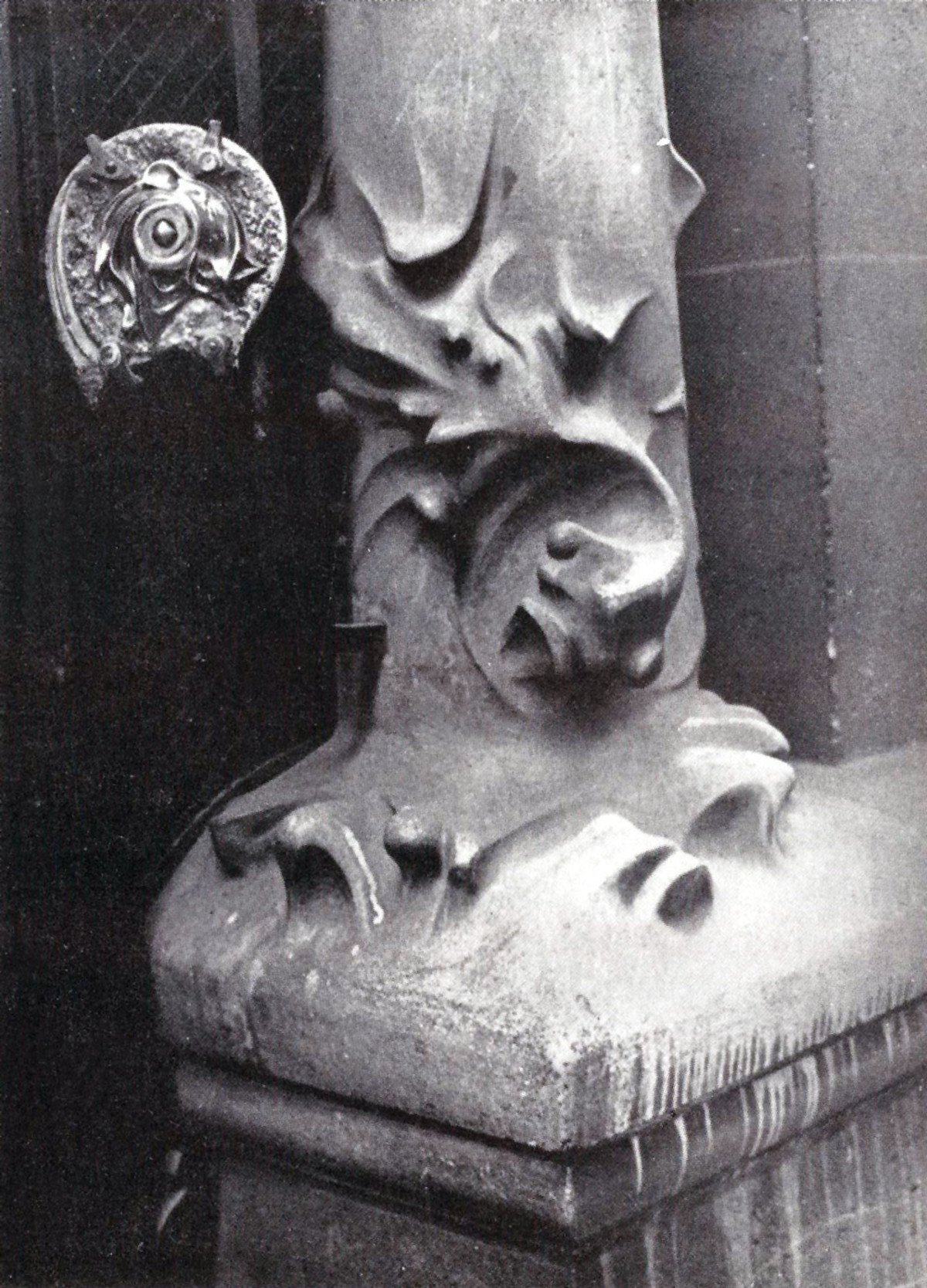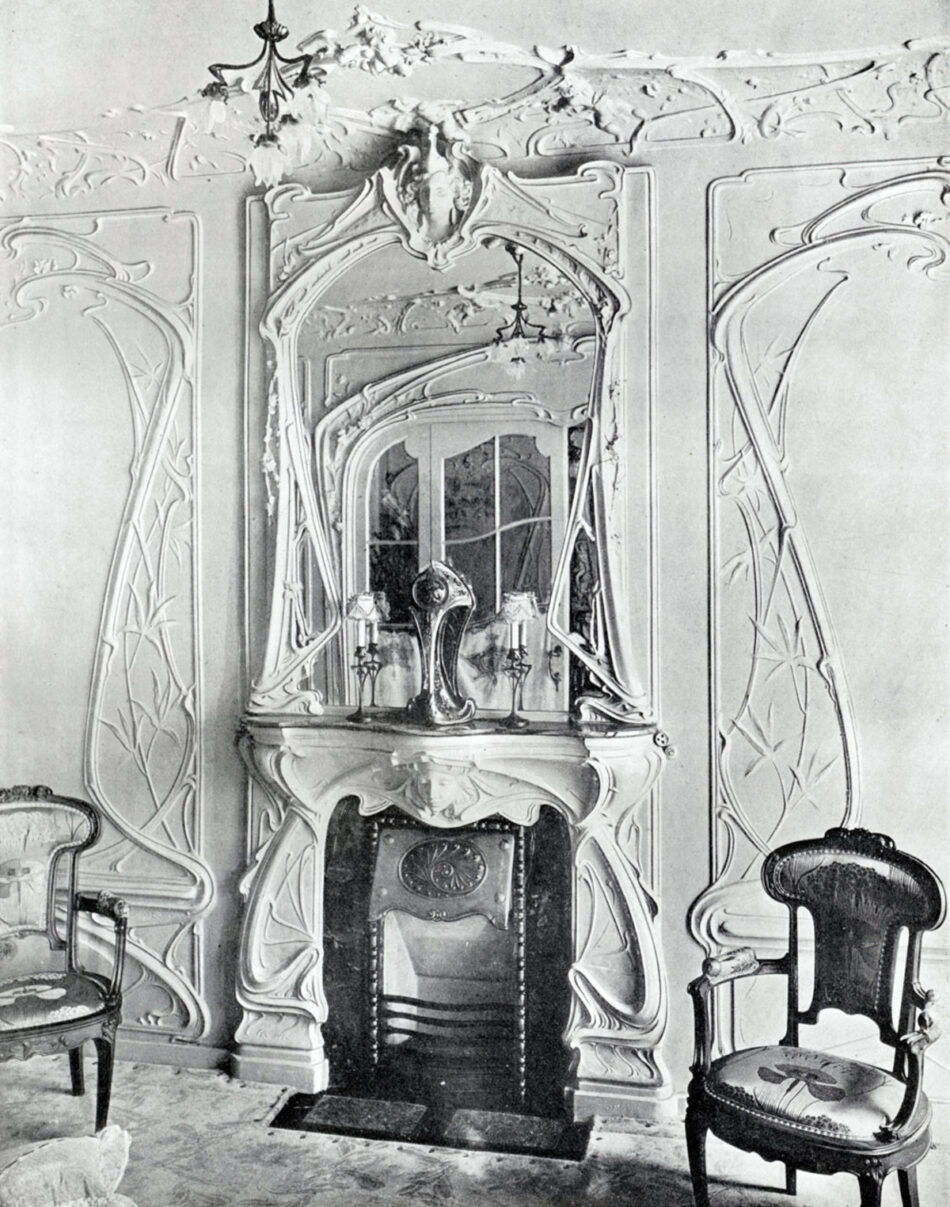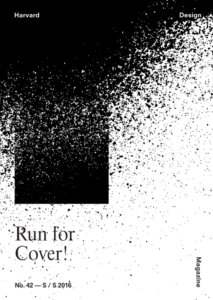Second Nature
“Imagine these bizarre garlands detached from the wall they are decorating and laid out on a table like a real object. It would send a shiver up one’s spine.”
— Paul Souriau, L’Imagination de l’artiste (1901)
The 19th-century eye abhorred abstractions. The most taciturn of figures—a simple line—could bring to mind a legion of objects and resemblances. “Form is always the form of something,” the philosopher Victor Cousin was known to repeat. For the aesthetician Paul Souriau, even an object as impassive as a couch had an “expressive attitude, a physiognomy.” He believed that ornamentalists could capitalize on the mind’s propensity to animate objects, transforming, for example, the leg of a table into the claw of a predator. But he cautioned his readers: accidental patterns in wood or marble can easily transform into hallucinatory nightmares, unwittingly giving life to “a profusion of deformed and frightening monsters.”
Fear played a critical part in conceptions of ornament in the 19th century. In aesthetic circles, fear of ornament was matched only by the fear of lack of ornament—by what art historian Alois Riegl termed a “horror vacui.” By most accounts of the time, ornament first emerged as a response to a primitive terror of nature. It was a recoiling from the external world, a way to bring order to the dizzying chaos. Primitive man was seen to be possessed by an ornamental impulse that impelled him to adorn every available surface, from his own skin to objects of daily use.
But the theorists who established these originary narratives were no doubt writing history in their favor: no moment in time produced as much ornament as the 19th century. Architecture, the non-mimetic art form par excellence, was overwhelmed by vividly figurative forms: fleshy shoots, corpulent flowers, and coiled fronds. The “parasitic vegetation,” as Souriau termed it, took root most invasively in the dimly lit interiors of the bourgeois home, where the plush verdancy of furniture and wall coverings were made to contrast with the alienating surfaces of the modern metropolis.

But if these interior decors had emerged to provide refuge from the street, they soon were seen as equally menacing. An important faction of designers perceived ornament as a special locus of vitalist disclosure, a conduit for a wholly new and potentially disruptive kind of metaphor. Ornament was a second nature, one that captured and focused the animate forces more potently than the living world itself. Ornamentalists quickly recognized that once mobilized, these forces inevitably took on demonic grimaces; they looked fearsome, unsettling, and they stared back. This is especially true when given three-dimensional form. The viscid coil of an unfurling leaf could be carved to appear so real it seemed wet to the touch. And so too the tongue, as Salvador Dalí implied in his 1933 essay “The Terrifying and Edible Beauty of Fin-de- Siècle Architecture.” “Eat me,” Dalí captioned a photograph of one of Hector Guimard’s columns in the Paris Metro. Ornamental flesh was as delectable as it was repulsive.

Ralph Ghoche is a historian of architecture and urbanism.
His work focuses on 19th-century French architecture and its relationship to theories of ornament, archeology, and aesthetics.
He holds professional and post-professional degrees in architecture from McGill University and a PhD in a Architectural
History and Theory from Columbia University. He teaches at Barnard College.
